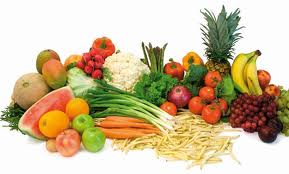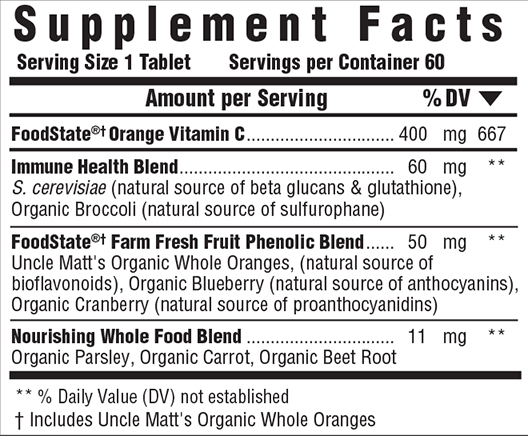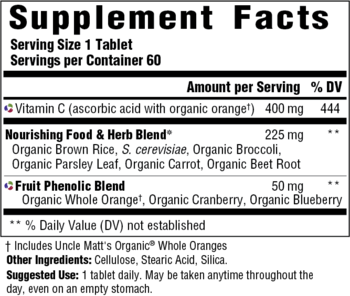Whole food vitamins and FoodForm Vitamins are hot topics in supplements. But, definitions for these terms have morphed into a broader scope than originally intended. It is time to shine a spotlight on difficult to discover truths.
WHAT THE TERMS "SHOULD" MEAN
1. Whole Food vitamin should mean that the vitamins were made by nature in a plant, yeast, or bacteria. ref Or, they were made in these sources but were consumed by an animal or a fish. Early natural B-complex vitamins were simply concentrates of liver and yeast. That was, of course, before most yeasts were fortified with added synthetic B vitamins. No chemical synthetic vitamins are added during any part of true whole food vitamin processing. Very few companies are in this category. And they are not the ones featured in most whole food vitamin advertisements. 
2. Foodform vitamins are different. First, some isolated natural and some synthetic vitamins are added to a tank with a liquid medium that contains a live plant, yeast, or bacteria plus added nutrients that these organic items like to eat as they grow. During the growth period, some of the added vitamins and minerals get consumed by the growing organic items, usually yeast. Then they are concentrated out, sometimes after fermenting or culturing. The thought here is that this process allows the living yeast cells to somehow change the isolated natural or synthetic vitamins back into something that looks and behaves more like a naturally created vitamin. While the food sources mentioned above do have a tiny amount of food built natural vitamins, all the vitamin dosages listed on labels of most whole food vitamin brands are not all natural from food, some are synthetic wrapped with food and some are natural isolated also with a food wrapper. They were mainly not built by the food listed.
3. Vitamins with food base. A third vitamin form sometimes mentioned with foodform or whole food vitamins simply have isolated natural vitamins and some synthetic vitamins together with a food base without any interchange of processing together or other attempts to change the vitamin forms between the foods and vitamins. An example here is Nature's Way Alive Multiple.
Are the many products called whole food vitamins all from food? RARELY! They are really foodform vitamins. Here are some examples of Foodfrom vitamin companies: MegaFood, New Chapter, Garden of Life (before the MyKind Vitamins), Standard Process, and Synergy Company. The impressions generated by these so-called whole food vitamin marketing stories are really somewhat mis-leading.
Here is the real story
Fancy language does not hide the actual facts. Cold-fusion-hydroponics is a fancy term for vitamins, some synthetic and some isolated from natural sources, that are added to live yeast cells in a tank with a liquid medium. The yeast cells can take in some of these vitamins, but Scientists do not know what happens to these vitamins once inside the yeast. Do they take on a different form or remain the same form they started with, whether synthetic or natural. They do appear slightly different under the microscope, but Scientist are not sure just what they are looking at or the significance of this new format, a synthetic vitamin in living yeast. The yeast do make some B vitamins naturally, but NOT vitamin B12, and very little if any fat soluble vitamins; A, D, E, & K. The above is talking about MegaFood vitamins. They are NOT all from the food(s) listed. The new labels now reveal this fact.
Another term used, Bio-transformation, sounds very impressive and mysterious. It infers vitamins undergo some sort of change during yeast growth or during bacterial fermentation. Some forms may change somewhat while others remain the same. If you read all the information on websites for such Brands as MegaFood, New Chapter, The Synergy, Standard Process, Doctor's Research, and Garden of Life's earlier formulas before the MyKind Organics article, the honest ones reveal that some synthetic vitamins are added at some point in the process of developing their multi-vitamin products. New changes recently to labels confirm this is true. See next article, Whole Food Vitamin Brands, for greater clarification.
True whole food vitamins are those that are made by nature in plants, bacteria, yeasts, or the animals that consume them, and simply concentrated. Very few vitamins fit this category. Realfood Organics from Country Life has some vitamins that fit. Plus the new MyKind Organics from Garden of Life has many, but not all. See here.
Studies attempt to show that these new lab generated whole food vitamin forms perform more like natural food vitamins than simply lab generated synthetics. This is very difficult to show as most vitamin forms are torn apart during digestion. Many foodform vitamins end up just combined with food compounds rather than truly changed. The new labels just released depict this aspect when they give the synthetic formula vitamin name paired with a food extract or concentrate.

UPDATE 11-2016 Both MegaFood and New Chapter have recently changed some of their labels to more accurately reflect what is really in their multiples. Yes, there are some synthetics. This has actually and dramatically increased the ratings of these Brands, but they still have a ways to go to measure up to the new vitamin criteria. Plus, many websites as well as vitamin store staff have not yet been informed of this truth aspect.
ARE THERE VITAMIN SUPPLEMENTS THAT ARE ALL NATURAL FROM ONLY FOOD SOURCES? While many make such claims, only a few live up to them.
Here are some of the only from food vitamins: (still looking)
While here are ones that use some synthetics along with food:
- Megafood, Garden of Life, New Chapter, Abundant Earth Labs, Naturelo, Pure Synergy, Wholesome Wellness, Whole Nature, Key Nutrition, Natural Factors Whole Earth & Sea multiples,
- Garden of Life (My Kind Organics) and Nutrigold say they have all from food vitamins. They use a food blend for their vitamins, but from conversations with the supplier company's CEO, analysis of the patent to produce, and the U.S. Department of Agriculture nutrient content of foods, there is no logical way this is true without some synthetic vitamins also introduced, which the patent mentions and allows.
To continue reading about whole food vitamins, click here
 Monday, June 18, 2018 at 12:13AM
Monday, June 18, 2018 at 12:13AM
